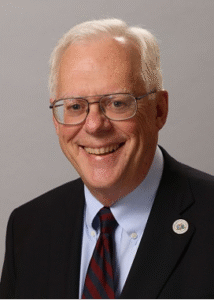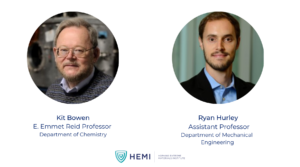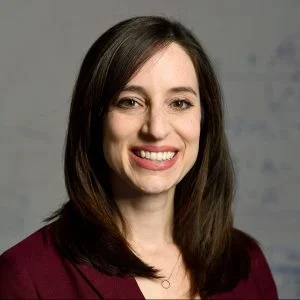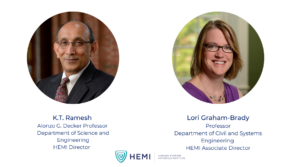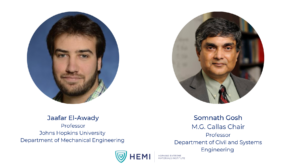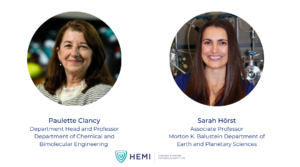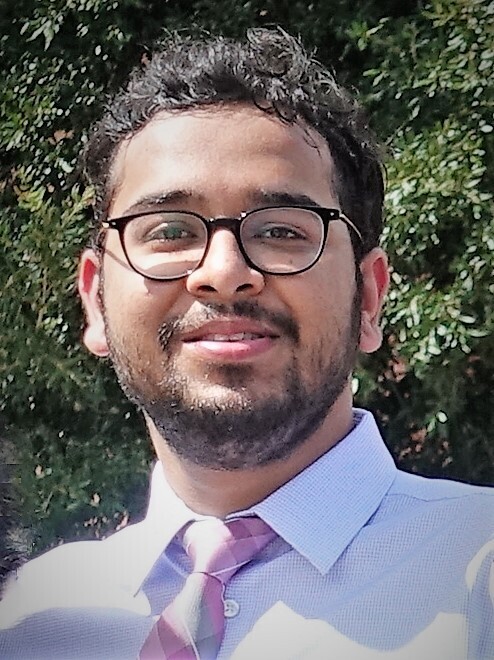Interns in the Extreme Arts program, a collaboration between HEMI and Maryland Institute College of Art, presented their final projects recently to an audience including HEMI mentors, staff, and students.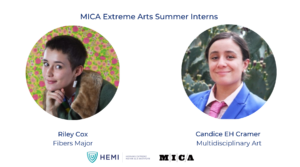
Started in 2015, the HEMI/MICA Extreme Arts internship program brings students from MICA to HEMI to translate results of HEMI’s research on extreme events in creative and visual ways.
Riley Cox, MICA student majoring in fibers, interned with Rebecca Schulman, an associate professor in the Whiting School of Engineering’s Department of Chemical and Biomolecular Engineering. Cox experiments with weaving structures that contain LED matrices and can be coded to light up portions of cloth in desired patterns. Her goal is to create responsive, smart textiles that could be programmed to generate patterns, both through the physical process of weaving and through integrated technology.
During her internship, Cox says she was “inspired by Professor Schulman’s use of synthetic DNA computing circuits as a way to generate patterned responses.”
In Schulman’s research, chemical patterns act as a blueprint, defining the growth of cells. The process of weaving can function in a similar way, relying on patterns embedded in the order and placement of threads to create an output of different structures of cloth, according to Cox.
“The loom has historically been considered the precursor to modern computing,” said Cox, whose project explores this relationship between technology and handcraft.
In tackling her project, she used digital drafting software which allowed her to experiment with patterns that could be generated within the threading process.
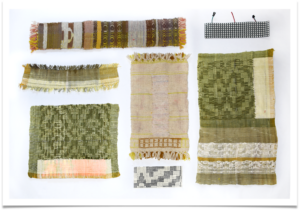
Fibers work by Riley Cox
Candice EH Cramer, a MICA student majoring in multidisciplinary art, says, “The most resilient of things on Earth are what comprises the planet: minerals. Some of these minerals, like zircon and garnet extracted today, could share evidence of evolution during the earliest part of Earth’s history.”
Cramer interned at HEMI with Emmy Smith, an assistant professor in the Krieger School of Arts and Science’s Department of Earth and Planetary Sciences. Cramer said that through Smith’s work, she was able to “glean whispers of Precambrian life recorded in sedimentology, which endures beyond carbon dating by using uranium lead dating.” Through observing rocks extracted for their zircons, searching for sulfur as metabolism markers in marine sediments, and witnessing garnets prepared for spectrometry, she said she “gained a fondness” for minerals for their intrinsic value and their innate storytelling.
“As we face an age on Earth that is being shaped in front of our eyes by humans to the detriment of the environment, I wonder if these minerals can offer us wisdom by examining and replicating their forms through drawing,” said Cramer.
She is also inspecting minerals found in paint pigments to ponder upon the sustainability of the painting practice.
The event completes the eighth consecutive year of the Extreme Arts program which is a collaborative program between HEMI at Johns Hopkins University and the Maryland Institute College of Art.
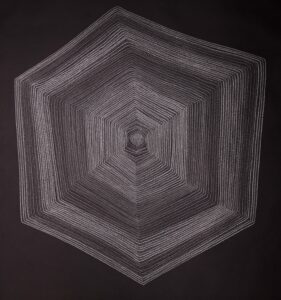
Resilient Shard
(Snowball Earth)
by Candice EH Cramer
